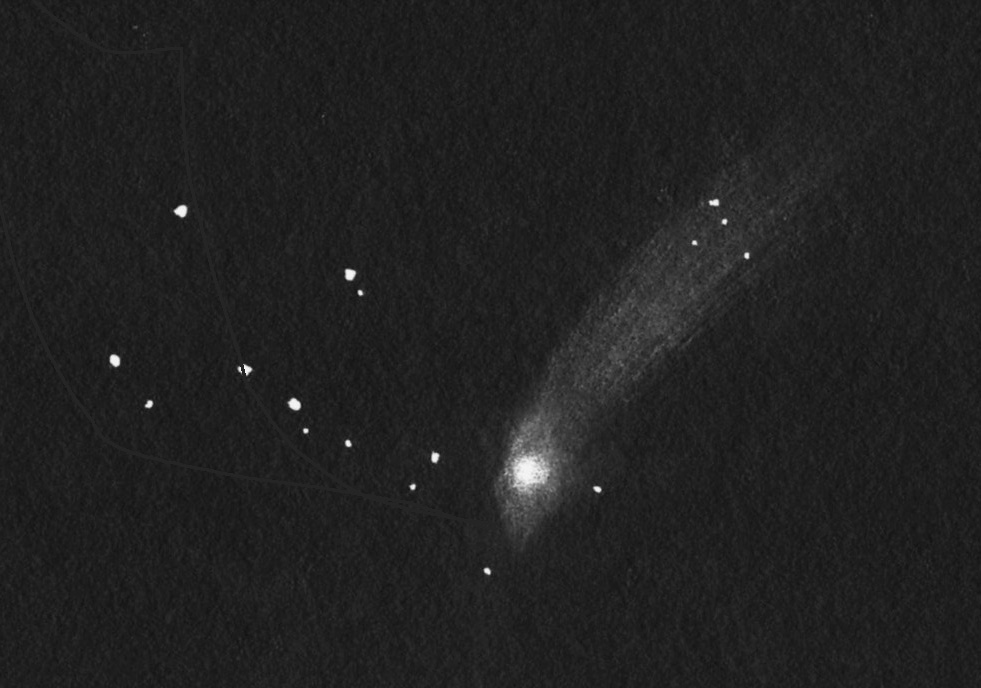
Perihelion: 2015 August 13.08, q = 1.243 AU
There have been a handful of occasions throughout recent history when someone has discovered a comet while looking for, or examining, another one. Such an incident happened in late 1969 in the former Soviet Union, when on September 11 Svetlana Gerasimenko with the Alma Ata Observatory (in what is present-day Kazakhstan) took photographs of Comet 32P/Comas Sola. Klim Churyumov, then with the Kiev Observatory, performed the astrometric measurements of what he believed was that comet, but a month later realized that the positions were far off. Upon re-examining the photographs he found that he had in fact measured a previously-unknown comet that was some two magnitudes brighter than Comet Comas Sola (that was also on the photographs).
The newly-discovered Comet Churyumov-Gerasimenko was found to have an approximate orbital period of 6.6 years. It has been recovered on every return since then, and during the 1982 return, which took place under very favorable viewing geometry, it reached 9th magnitude and I was able to detect it with binoculars. It also exhibited a distinct dust tail which on one occasion I measured as being 20 arcminutes long visually.
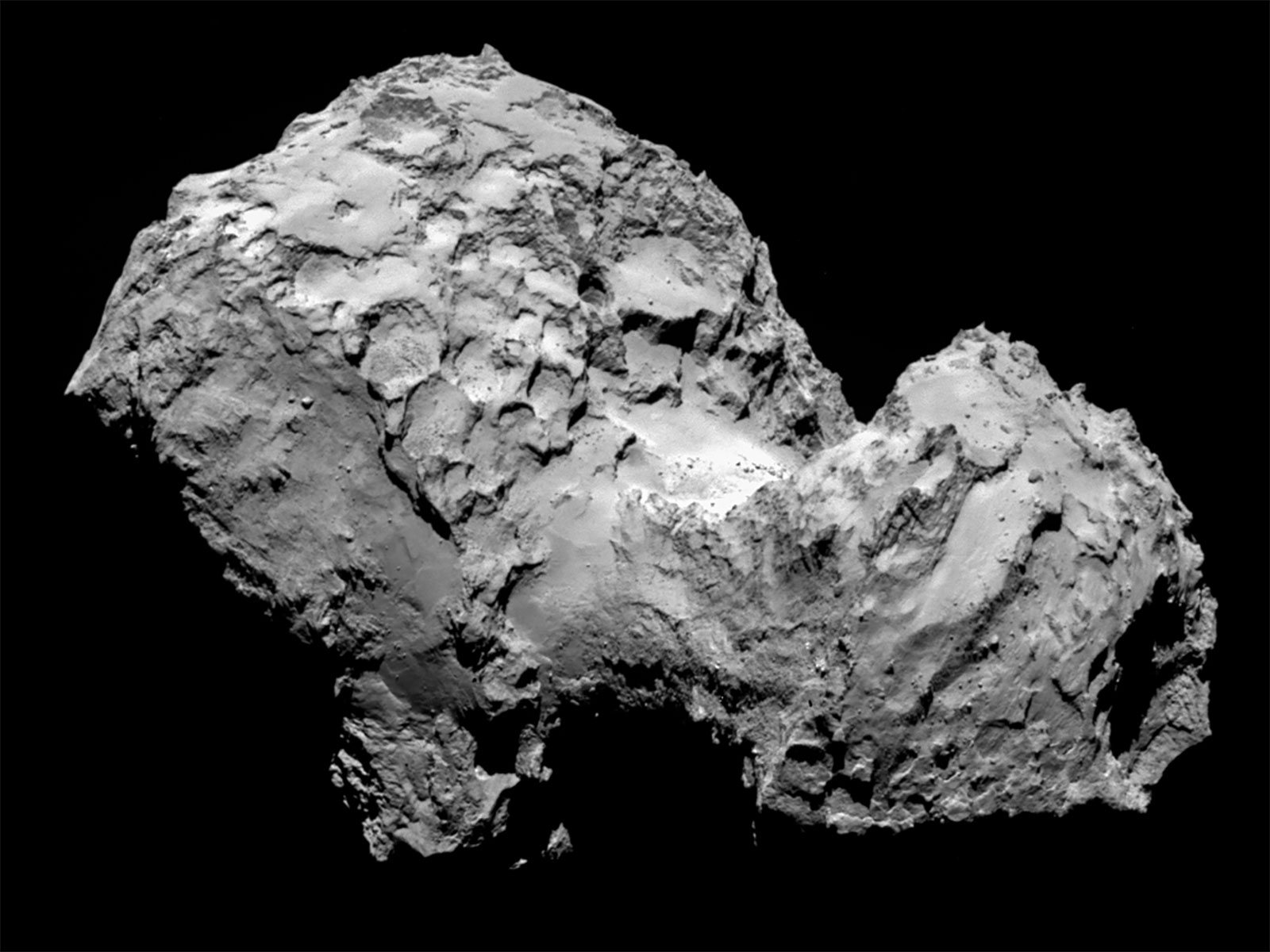
Comet 67P achieved fame in the mid-2000s when it was selected as the destination for ESA’s ambitious Rosetta mission. Rosetta had originally been scheduled for launch in January 2003 with its destination being Comet 46P/Wirtanen, however a failure of the Ariane 5 launch rocket a month earlier grounded all flights of that vehicle until the necessary failure analysis could be conducted. Comet 67P was accordingly chosen as the new destination.
Rosetta was successfully launched from Kourou, French Guiana on March 2, 2004. Over the next 5½ years it performed three gravity-assist flybys of Earth as well as a very close gravity-assist flyby of Mars, and – as discussed in a previous “Special Topics” presentation – it also performed flybys of the main-belt asteroid (2867) Steins in September 2008 and the larger main-belt asteroid (21) Lutetia in July 2010. Not too long after the Lutetia encounter Rosetta was placed in a state of hibernation, from which it was awoken in January 2014. From there it made its final approach to Comet 67P, arriving there on August 6 of that year, and after various maneuvers, it successfully entered orbit around the comet’s nucleus a month later.
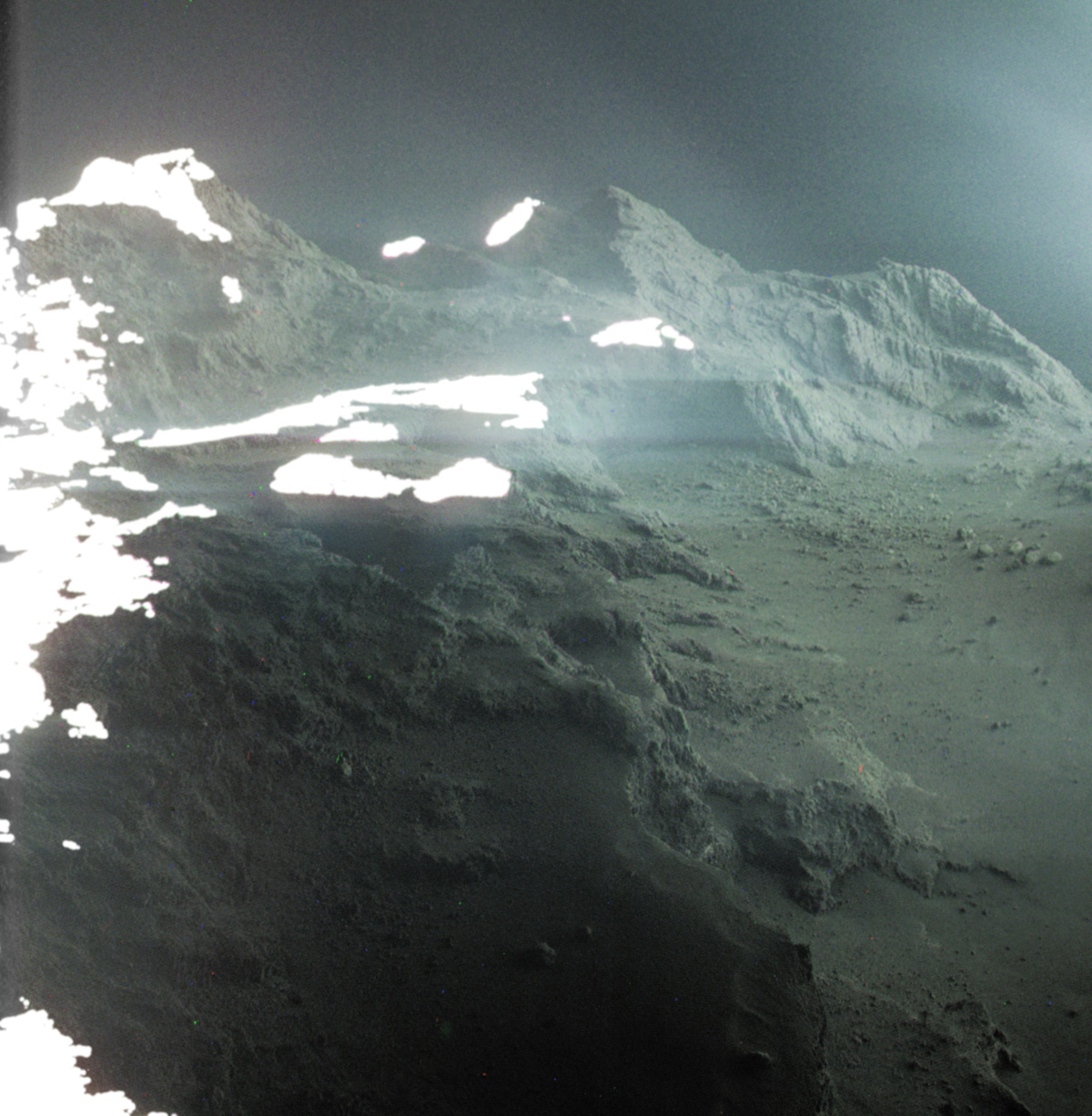
The approach photographs showed that the comet’s nucleus is made up of two discrete hemispheres, one distinctly larger than the other, making it a “contact binary” similar to several of the near-Earth asteroids that have been successfully radar-imaged (and also the Kuiper Belt object (486958) Arrokoth that was visited by the New Horizons mission at the beginning of 2019). The evidence that has been collected suggests that the two hemispheres were at one time two separate objects that collided and stuck together a long time ago and based upon the various other objects that exhibit such a structure it would appear that this is a relatively common occurrence amongst the “small bodies” of our solar system.
At the time of Rosetta’s arrival, Comet 67P was a full year away from perihelion passage, and the overall rationale for the mission was to examine the comet as it approached perihelion and became active, and then as it began to shut down as it receded from perihelion. With an onboard complement of eleven scientific instruments Rosetta was able to conduct numerous scientific studies throughout that time, and among its findings were numerous organic compounds, including four for the first time (one of these being acetone), a deuterium-to-hydrogen ratio in its water that is three times higher than that in Earth’s seawater – the significance of these findings being part of the subject of a future “Special Topics” presentation – large amounts of free oxygen (which was quite unexpected), a lack of a magnetic field, and the appearances of numerous “sinkholes” and the crumbling of cliffs as the comet’s activity proceeded.
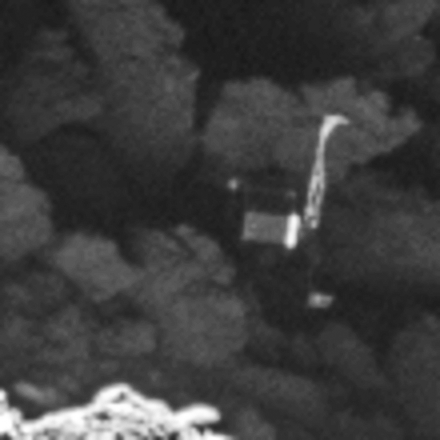
September 2, 2016. Courtesy ESA/Rosetta/MPS for OSIRIS Team.
Rosetta also carried a separate probe, Philae, that was designed to soft-land upon the comet’s nucleus. Rosetta released Philae on November 12, 2014, for a seven-hour descent to the comet’s surface, but unfortunately, the planned anchoring system failed and Philae bounced twice before coming to rest, apparently on its side in a hole next to some high cliffs. It was nevertheless able to carry out various scientific observations during the 60 hours before its battery power ran out, and while the cliffs were apparently made of a rather porous material, Philae’s drilling “hammer” broke after a few minutes, indicating that the ground underneath it was very hard, either rock or solid ice. After its batteries ran out contact with Philae was lost; meanwhile, there was hope that a better sun angle later in the mission might allow for the batteries to be recharged to an extent, and in fact, contact was briefly restored on a couple of occasions in June and July 2015 but unfortunately not long enough for any significant data transmission.
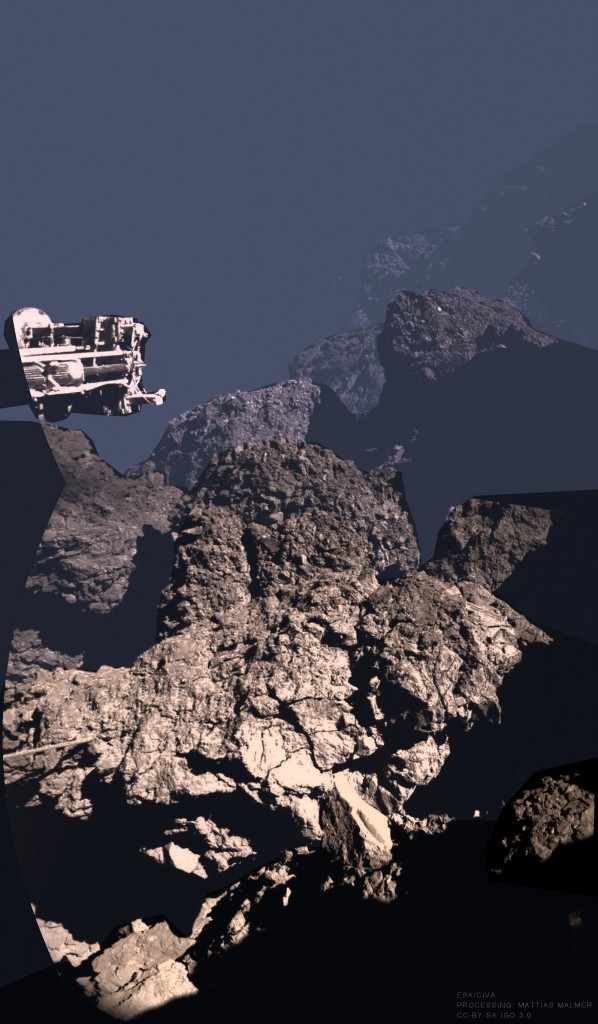
Rosetta’s mission was formally scheduled to end at the end of 2015, however, before that time the mission was extended until the end of September 2016, i.e., a full year after the comet’s perihelion passage and two full years after the spacecraft’s arrival. As that time approached Rosetta was placed into progressively lower orbits, and on September 2 it successfully photographed Philae, on its side, and wedged against a large overhanging cliff. On September 30 Rosetta touched down upon the comet’s surface, and contact was terminated.
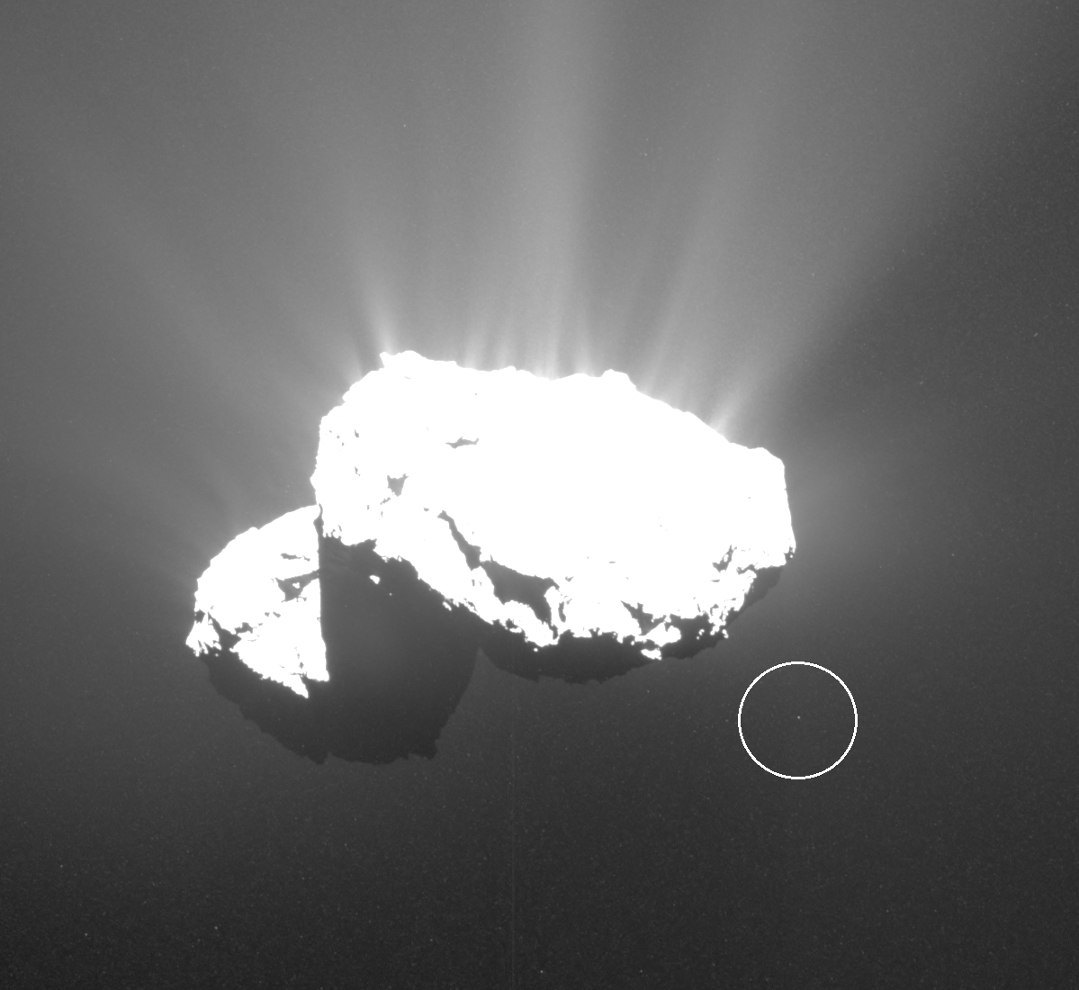
The large collection of data collected by Rosetta during the two years it spent orbiting Comet Churyumov-Gerasimenko is still being analyzed and will continue to be for some time yet to come. Just last year, for example, a Spanish amateur astronomer, Jacint Roger, was examining Rosetta images when he found a four-meter-wide moon in images that had been taken on October 21, 2015. This “Churyumoon,” as it was dubbed, was not a permanent feature, but did orbit the nucleus at a distance of 2 to 3 km for the next two days before disappearing.
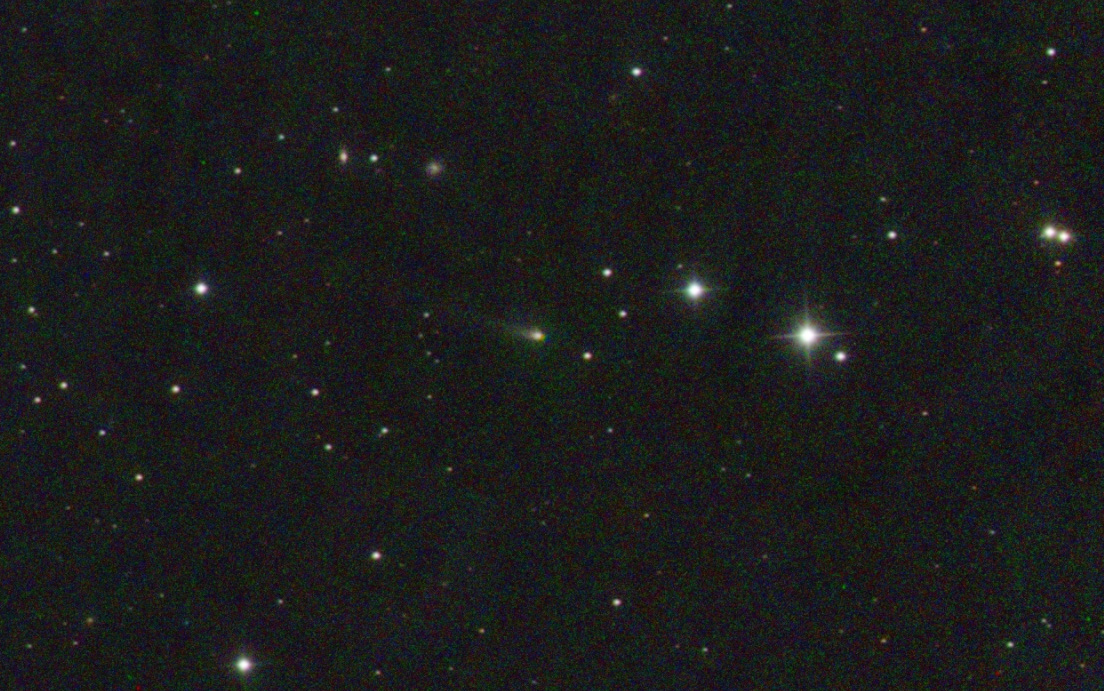
The viewing geometry during Comet 67P’s 2015 return to perihelion was not especially favorable, with the comet for the most part remaining at a moderately low elongation in the morning sky and reaching a peak brightness of about 12th magnitude. Meanwhile, although it won’t have the fanfare that accompanied this recent return, the comet’s next return, in 2021, is a very favorable one, similar to that of 1982. It passes through perihelion on November 2 and is closest to Earth (0.42 AU) less than two weeks later, and once again should reach a peak brightness around 9th magnitude.
More from Week 32:
This Week in History Special Topic Free PDF Download Glossary
Ice and Stone 2020 Home Page


